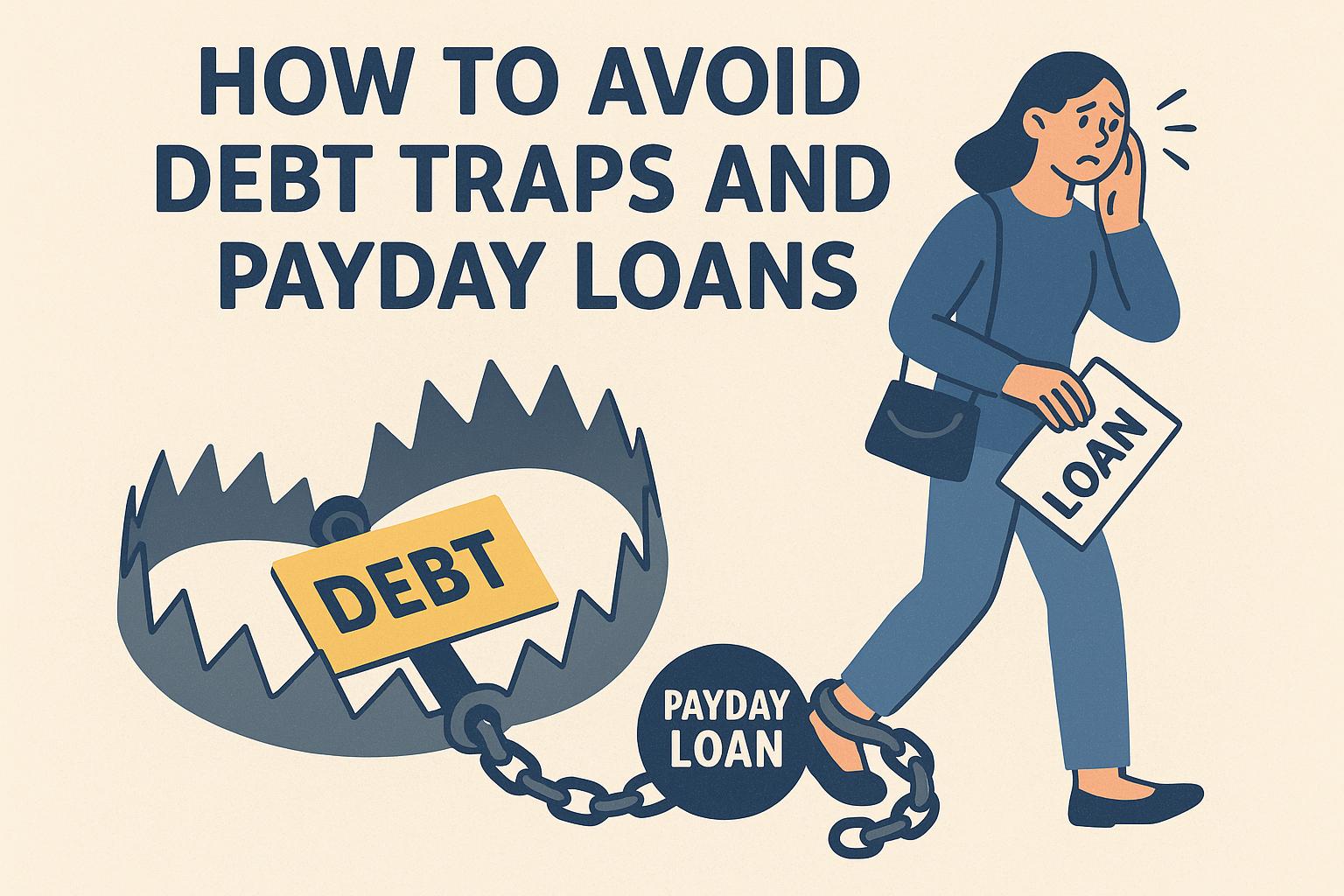Understanding Debt Traps
Debt traps refer to situations where borrowers find it difficult to manage their existing debt and feel compelled to take on additional loans to fulfill their financial obligations. This often leads to a vicious cycle of borrowing, resulting in increased financial stress and more debt accumulation. Recognizing the early signs of falling into a debt trap is crucial for prevention and maintaining financial well-being.
Falling into a debt trap can have significant long-term consequences. It can impact one’s credit rating, making it more difficult to secure loans in the future. It may also lead to increased financial strain, affecting mental health and overall quality of life. Therefore, understanding the nature of debt traps is an important step towards financial stability.
Common Causes of Debt Traps
Identifying the factors that contribute to debt traps is essential for avoiding them. Several common causes can lead individuals into these financially precarious situations:
Poor Financial Planning: Many individuals find themselves in debt traps due to inadequate financial planning. Without a proper budget, people may overspend or not allocate resources effectively, leading to financial shortfalls that necessitate borrowing. A lack of financial discipline can create a cycle where one relies on debt to meet regular financial obligations.
Lack of Emergency Savings: Having an emergency fund is critical in managing unforeseen expenses without going into debt. Unfortunately, many people do not prioritize saving for emergencies, leaving them financially vulnerable when unexpected costs arise. Whether it’s a sudden medical bill or car repair, without savings, individuals might resort to high-interest loans to cover these costs.
High-Interest Loans: Loans with high interest rates, such as credit cards or payday loans, can quickly become unmanageable. Interest accumulates rapidly, and if payments are not made on time, the amount owed can grow exponentially. Borrowers may find themselves trapped in a cycle where they need to borrow more just to cover the interest, let alone the principal amount.
Payday Loans: A Closer Look
Payday loans are designed as short-term, high-interest loans meant to provide quick cash before the borrower’s next paycheck. Although these loans offer a temporary solution to immediate financial needs, they pose significant risks that can lead to severe long-term financial difficulties.
Risks Associated with Payday Loans
The seemingly accessible nature of payday loans often masks the dangers associated with them. Here are some key risks that borrowers should be aware of:
Exorbitant Interest Rates: Payday loans typically come with extremely high interest rates, often exceeding 300% on an annualized basis. This means that even a small loan can quickly grow in size, making it increasingly difficult for borrowers to repay the principal along with the interest.
Short Repayment Terms: These loans usually require repayment by the borrower’s next payday, which is generally within two weeks. Such short repayment terms can pose challenges, as borrowers must come up with the funds quickly, potentially leaving them in a position where they need to borrow again to meet their obligations.
Lack of Regulation: In some regions, payday lenders operate with minimal regulatory oversight, which can lead to unethical or predatory lending practices. Some lenders might not provide transparent terms, or they may trap borrowers in a cycle of debt through abusive collection practices.
Strategies to Avoid Debt Traps and Payday Loans
Maintaining financial stability involves adopting strategies to avoid debt traps and the temptation of payday loans. Here are some of the approaches that can help individuals steer clear of financial pitfalls:
Develop a Budget
Establishing and adhering to a well-thought-out budget is a foundational approach to managing finances. A detailed budget allows individuals to track their income and expenses meticulously, ensuring that they meet their financial obligations without relying on additional loans. Budgeting tools and apps can assist in maintaining discipline and making adjustments as needed to stay on track.
Build an Emergency Fund
Creating an emergency fund is an integral part of financial planning. By setting aside a small amount regularly, individuals can gradually build a reserve to cover unexpected expenses. This safety net minimizes the need to resort to high-interest loans during financial emergencies, promoting long-term financial security.
Understand Loan Terms
For those considering taking on loans, it is essential to fully grasp the terms involved. This includes comprehending interest rates, fees, and repayment schedules. Being educated about these aspects helps borrowers make informed decisions and avoid loans that could lead to financial strain. Utilizing resources, such as the Consumer Financial Protection Bureau, can provide valuable insight into fair lending practices.
Seek Alternative Financing Options
Before turning to payday loans, individuals should explore alternative financing options. Community credit unions and peer-to-peer lending platforms often offer more favorable loan terms, lower interest rates, and better customer service compared to payday lenders. These alternatives can provide the necessary funds without trapping borrowers in high-interest debt cycles.
Conclusion
Navigating the landscape of personal finance requires proactive management and awareness of potential debt traps. Avoiding the pitfalls of debt and payday loans necessitates a combination of strategic budgeting, diligent saving, and informed borrowing practices. By creating a sustainable budget, building an emergency fund, and understanding loan terms thoroughly, individuals can significantly reduce their risk of encountering financial hardships.
For those seeking additional guidance, financial counseling services can offer tailored advice and support, aiding in achieving financial literacy and independence. These services support individuals in crafting personalized financial plans that align with their goals and life circumstances. In this way, people can chart a course towards financial stability and security, avoiding the many dangers of debt traps and high-interest loans.
This article was last updated on: September 25, 2025


